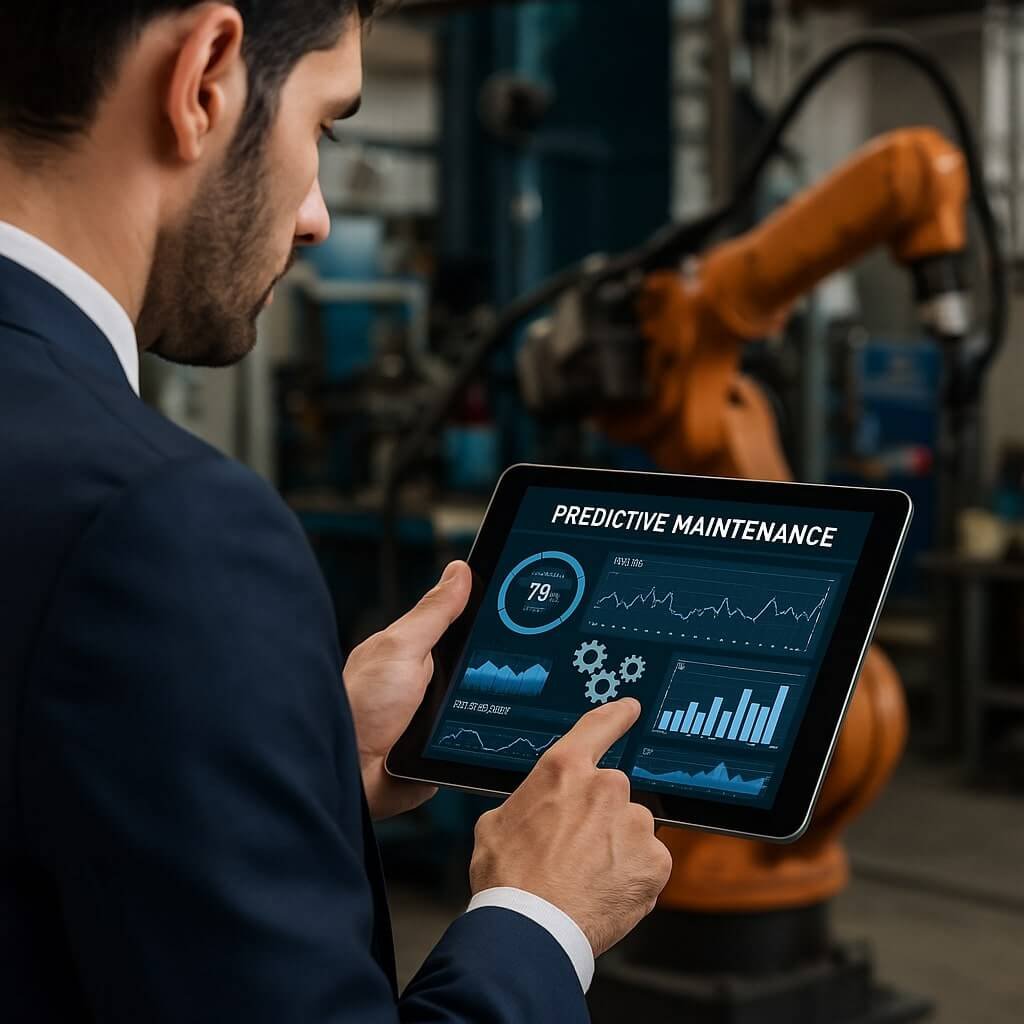Manufacturing industries are under increasing pressure to optimise productivity while reducing operational costs. Traditional maintenance approaches—corrective and preventive—often lead to unplanned downtime and inefficient resource usage. Enter Predictive Maintenance Apps, a groundbreaking solution that leverages data analytics, machine learning, and IoT to forecast equipment failures before they occur.
In this article, we explore how predictive maintenance (PdM) apps are transforming manufacturing operations, driving cost savings, and enhancing overall equipment effectiveness (OEE).
What Is Predictive Maintenance?
Predictive maintenance is a strategy that uses real-time data and advanced analytics to predict equipment failures. Instead of following a rigid maintenance schedule, manufacturers can perform maintenance only when it’s needed, reducing downtime and extending asset lifespan.
Key Technologies Used:
- IoT Sensors: Monitor temperature, vibration, and pressure.
- Machine Learning Algorithms: Analyse historical data to detect failure patterns.
- Cloud Computing: Enables scalable data storage and remote access.
- Mobile Apps: Allow real-time monitoring and alerts via smartphones and tablets.
Benefits of Predictive Maintenance Apps in Manufacturing
1. Reduced Downtime
By predicting equipment failure before it happens, companies can schedule repairs during non-peak hours, avoiding costly production halts.
2. Lower Maintenance Costs
PdM helps identify exactly what needs fixing, reducing unnecessary inspections and part replacements.
3. Extended Equipment Lifespan
Continuous monitoring prevents minor issues from escalating into major failures, thereby prolonging machine life.
4. Improved Safety
Timely repairs reduce the risk of accidents caused by equipment malfunction.
5. Enhanced Productivity
With machines running more reliably, manufacturers can maintain consistent production schedules and meet customer demands more efficiently.
Real-World Applications
Automotive Industry
Predictive maintenance apps are used to monitor robotic arms and conveyor belts, ensuring continuous vehicle assembly with minimal interruptions.
Food & Beverage
Sensors track refrigeration units and packaging machines, preventing spoilage and ensuring compliance with food safety regulations.
Pharmaceuticals
Precision is crucial—PdM apps ensure that cleanroom equipment and drug manufacturing tools operate flawlessly.
Key Features to Look for in Predictive Maintenance Apps
- Real-Time Alerts & Notifications
- Customizable Dashboards
- Integration with ERP and CMMS
- Historical Data Analysis
- Mobile Access for On-the-Go Management
- AI-Driven Failure Prediction
Challenges in Implementing Predictive Maintenance
While the benefits are substantial, adopting predictive maintenance apps isn’t without challenges:
- High Initial Costs: IoT infrastructure and app development can be expensive.
- Data Overload: Managing and analysing vast amounts of sensor data requires robust systems.
- Skill Gap: Staff may need training to understand and act on PdM insights.
Still, the long-term ROI often outweighs these short-term hurdles.
Future of Predictive Maintenance in Manufacturing
As AI and machine learning technologies evolve, predictive maintenance will become even more accurate and accessible. Future apps may incorporate augmented reality (AR) for hands-free diagnostics and edge computing for faster data processing. The trend is clear: smart maintenance is becoming the new industry standard.
FAQs About Predictive Maintenance Apps
1. What is the difference between preventive and predictive maintenance?
Preventive maintenance is scheduled at regular intervals regardless of equipment condition, while predictive maintenance is based on actual performance data to determine when maintenance is needed.
2. Are predictive maintenance apps expensive to implement?
The initial investment can be high, but predictive maintenance significantly reduces unplanned downtime and repair costs, delivering excellent ROI over time.
3. Can small manufacturers benefit from predictive maintenance apps?
Yes. Many PdM solutions are scalable and can be customised for small and mid-sized manufacturing operations.
4. What industries benefit the most from predictive maintenance?
Industries with complex machinery and high downtime costs—like automotive, aerospace, food processing, and pharmaceuticals—see the greatest benefits.
5. How do predictive maintenance apps collect data?
They use IoT-enabled sensors to gather real-time operational data from machinery, which is then analysed by AI algorithms to predict failures.
Conclusion
Predictive maintenance apps are not just a technological trend—they’re a strategic necessity for manufacturers aiming to stay competitive in the digital age. By transitioning from reactive to proactive maintenance, businesses can unlock unprecedented levels of efficiency, reliability, and cost savings.
As manufacturing becomes increasingly data-driven, the adoption of predictive maintenance will only accelerate. Start now, and gain a future-ready advantage.






